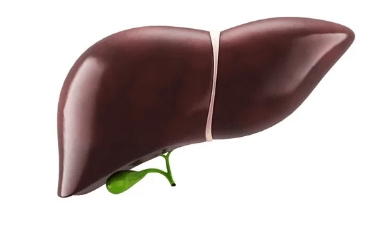
Patients with non-alcoholic fatty liver disease(NAFLD) are at higher risk of cardiovascular disease, because NAFLD prompts the over-production of a class of proteins that cause inflammation and damage to their blood vessels.
These findings by scientists from Nanyang Technological University, Singapore (NTU Singapore) and the National University of Singapore (NUS) shed light on why the leading cause of mortality in NAFLD patients is cardiovascular complications, instead of liver damage.
NAFLD is a general term for liver diseases affecting patients who drink little to no alcohol. It is mainly characterised by having too much fat stored in liver cells and can lead to liver cirrhosis and liver cancer.
It is estimated that up to 40 per cent of the population in Southeast Asian countries, including Singapore, have NAFLD.
The research team, led by Nanyang Assistant Professor Christine Cheung from NTU’s Lee Kong Chian School of Medicine (LKCMedicine), found a higher level of blood vessel damage in NAFLD patients, which increases the risks of blood clots and cardiovascular diseases.
Asst Prof Cheung said: “The growing prevalence of fatty liver disease globally is a concern. In Singapore, one in three is likely to develop non-alcoholic fatty liver disease over the next 10 years. These patients are at increased risk of developing vascular diseases, such as coronary artery disease and cerebrovascular disease. The good news is that liver disease, at its early stages, is reversible.”
The team, comprising researchers from NTU, the National University Health System and the Agency for Science, Technology and Research’s (A*STAR), Singapore, published their findings in EMBO Reports in April.
Fatty liver disease associated with increased chemokine levels
The team recreated blood vessel cells from samples donated by 99 NAFLD patients and 56 healthy controls to be used as experimental models for the study.
They found that the blood vessel cells of fatty liver disease patients contained higher levels of a class of proteins called chemokines – up to three times higher than in healthy individuals.
Chemokines are strong attractants of immune cells. Their main role in the body is drawing immune cells to sites of infections so that these cells can combat infections.
However, when abnormally high levels of immune cells are recruited into a blood vessel, it becomes harmful.
In particular, the researchers noticed that a type of immune cells known as T cells were strongly responsive to the chemokines in NAFLD patients. T cells are an important part of the body’s immune system that fight against foreign particles.
The researchers discovered that the higher level of chemokines in fatty liver disease patients was attracting T cells into blood vessel walls. These T cells then caused inflammation of blood vessels, damaging them.
Higher levels of damage and inflammation can lead to leakiness in the blood vessels, impairing blood vessels’ integrity over time and increasing the risk of blood clot formation. It can lead to devastating events if the blood flow to vital organs is obstructed, such as ischaemic tissue injury.
The team detected three times as many circulating damaged endothelial cells — cells from the inner lining of blood vessels that have been shed into the bloodstream — in fatty liver disease patients, which is a sign of blood vessel injury.
The researchers believe that fatty liver disease patients have increased chemokine production due to the higher levels of oxidized lipids and free fatty acids in their blood.
Clinical collaborator and co-author Associate Professor Dan Yock Young from the NUS Yong Loo Lin School of Medicine and the National University Health System said: “Non-alcoholic fatty liver disease goes beyond the liver, impacting multi-organ system and leading to vascular complications such as coronary diseases and stroke. This study demonstrates for the first time how the levels of circulating damaged endothelial cells differ between non-alcoholic fatty liver disease patients and non-patients.”
“This opens new perspectives in our understanding of fatty liver diseases and therapeutic strategiesfor treating them. Instead of focusing narrowly on the liver pathology, a holistic approach in targeting the systemic inflammation of injured blood vessels has the potential to decrease the mortality rate of fatty liver disease patients,” said Assoc Prof Dan.
“Liver disease at its early stage is reversible with lifestyle changes such as exercise and a healthy diet. Lifestyle modification is key at an early stage to slow down the progression of both fatty liver disease and cardiovascular disease before they become too advanced for functional recovery,”

